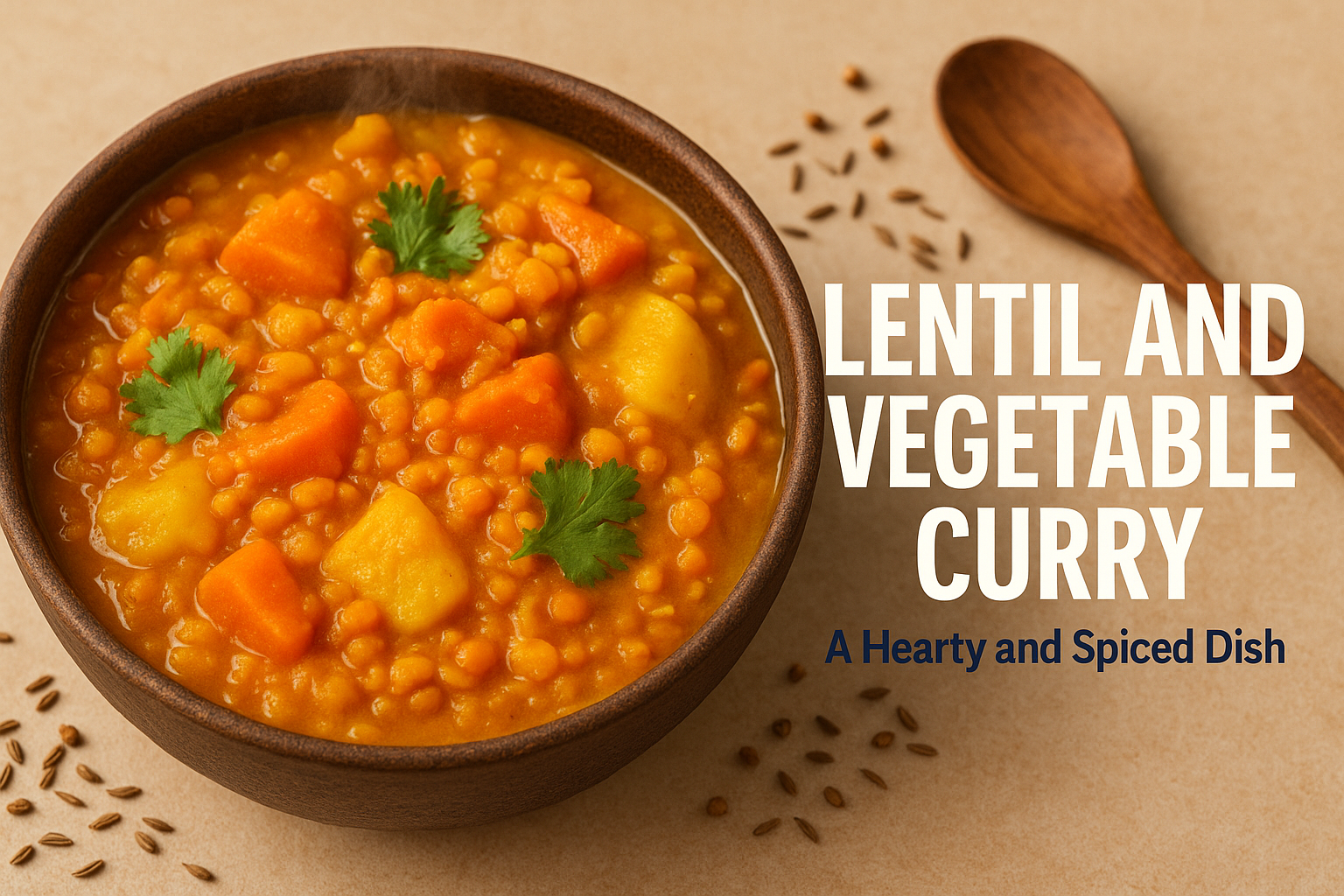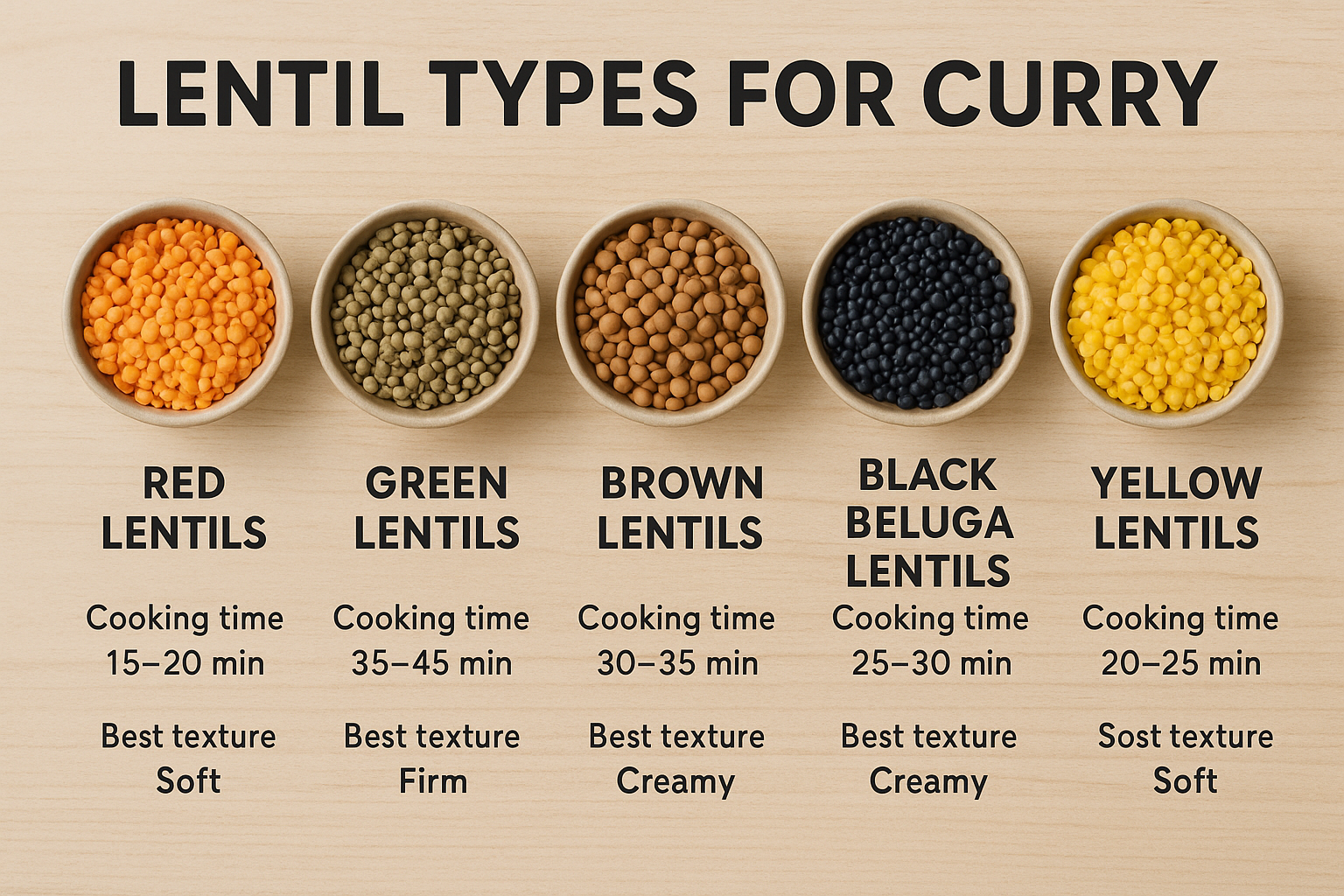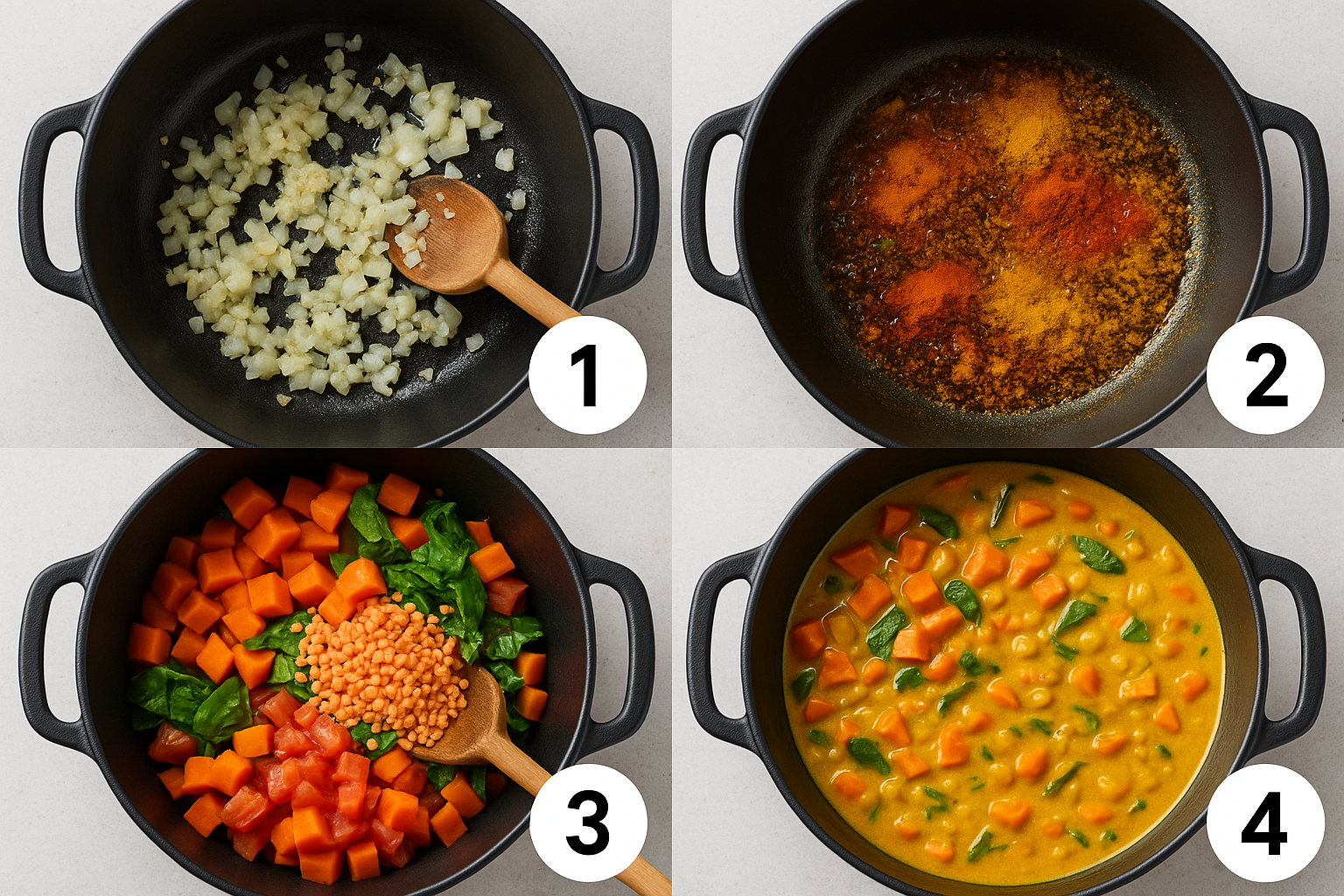Lentil and Vegetable Curry – A Hearty and Spiced Dish That’ll Transform Your Kitchen
Imagine coming home after a long day—maybe you’ve just finished an arm toning workout or wrapped up a set of dumbbell shoulder exercises—and you’re absolutely starving. Your muscles are tired from building that upper body strength, and the last thing you want to do is spend hours in the kitchen. But what if you could whip up something that’s not only incredibly nutritious and satisfying but also bursting with flavor? Enter lentil and vegetable curry, the one-pot wonder that’s about to become your new favorite meal.
This isn’t just another curry recipe. This is a complete game-changer for anyone who wants to eat well, feel amazing, and actually enjoy the cooking process. Whether you’re a seasoned chef or someone who can barely boil water, this hearty, spiced dish will make you look like a culinary genius. And the best part? It’s packed with plant-based protein, fiber, and all the good stuff your body needs—especially after you’ve been working on that upper body strength in the gym.
Key Takeaways

Why Lentil and Vegetable Curry Deserves a Spot in Your Weekly Rotation
Let’s talk about why this dish is so special. In 2025, we’re all looking for meals that check multiple boxes: healthy ✅, delicious ✅, easy to make ✅, and budget-friendly ✅. Lentil and vegetable curry hits every single one of these marks and then some.
Lentils are nutritional powerhouses. Just one cup of cooked lentils contains about 18 grams of protein and 15 grams of fiber. That’s more fiber than most people get in an entire day! This makes them incredibly filling and perfect for maintaining energy levels throughout the day—whether you’re tackling dumbbell shoulder exercises at the gym or powering through a busy workday.
The vegetables add even more nutrition, providing vitamins, minerals, and antioxidants that support everything from immune function to skin health. And those aromatic spices? They’re not just there for flavor. Turmeric contains curcumin, a powerful anti-inflammatory compound. Cumin aids digestion. Ginger can help with muscle soreness (hello, post-arm toning workout relief!). This curry is basically medicine in a bowl.
“Lentils are one of the most sustainable protein sources on the planet, requiring minimal water and actually improving soil quality. Eating lentil curry isn’t just good for you—it’s good for the environment too.”
The Essential Ingredients: Building Your Flavor Foundation
The Lentil Lineup
Not all lentils are created equal, and choosing the right type can make or break your curry. Here’s a quick breakdown:
| Lentil Type | Cooking Time | Best For | Texture |
|————-|————–|———-|———|
| Red Lentils | 15-20 minutes | Quick curries, dal | Breaks down, creamy |
| Green Lentils | 25-30 minutes | Hearty curries | Holds shape well |
| Brown Lentils | 25-30 minutes | Everyday cooking | Firm, earthy |
| Black Lentils (Beluga) | 20-25 minutes | Gourmet dishes | Firm, caviar-like |
| Yellow Lentils | 15-20 minutes | Traditional dal | Soft, creamy |
For this curry, red lentils or brown lentils work beautifully. Red lentils create a creamier, more integrated sauce, while brown lentils maintain their shape and provide a heartier bite.
The Vegetable All-Stars
The beauty of this dish is its flexibility. Here are some fantastic vegetable options:
The Spice Cabinet Essentials
This is where the magic happens. These spices transform simple ingredients into something extraordinary:
Step-by-Step: Crafting the Perfect Lentil and Vegetable Curry
Preparation Phase (10 minutes)
Step 1: Gather and Prep Your Ingredients
Start by rinsing your lentils thoroughly under cold water. This removes any debris and reduces cooking foam. Chop your vegetables into roughly equal-sized pieces—about 1-inch cubes work perfectly. This ensures even cooking.
Mince your garlic (3-4 cloves) and grate about 1 tablespoon of fresh ginger. If you’re using fresh tomatoes, dice them. If using canned, have them ready to go.
Step 2: Toast Your Spices (Optional but Recommended)
This step takes an extra 2 minutes but elevates your curry from good to restaurant-quality. In a dry pan over medium heat, toast whole cumin seeds and coriander seeds until fragrant. This releases their essential oils and intensifies the flavors.
Cooking Phase (30-35 minutes)
Step 3: Build Your Flavor Base
Heat 2 tablespoons of coconut oil or vegetable oil in a large pot over medium heat. Add diced onions and sauté until they’re soft and translucent, about 5 minutes. This is your flavor foundation.
Add your minced garlic and grated ginger, stirring constantly for about 30 seconds. You’ll know it’s ready when your kitchen smells absolutely amazing.
Step 4: Layer in the Spices
Now add your ground spices:
Stir everything together and cook for about 1 minute. This process, called “blooming” the spices, is crucial. It prevents them from tasting raw and bitter.
Step 5: Add the Vegetables and Lentils
Toss in your harder vegetables first (carrots, potatoes, sweet potatoes). Stir them around to coat with the spiced oil. After a minute or two, add your lentils and stir to combine.
Step 6: Add Liquids and Simmer
Pour in:
Bring everything to a boil, then reduce heat to a gentle simmer. Cover and cook for 20-25 minutes, stirring occasionally.
Step 7: Final Touches
In the last 5 minutes of cooking, add any quick-cooking vegetables like spinach, peas, or bell peppers. Taste and adjust seasoning with salt, pepper, and a squeeze of fresh lime juice.
The curry is done when the lentils are tender and the vegetables are cooked through. If it’s too thick, add more broth. If it’s too thin, simmer uncovered for a few more minutes.
Nutritional Benefits: Why This Curry Powers Your Body

Protein Powerhouse for Muscle Recovery
After an intense arm toning workout or a session of dumbbell shoulder exercises, your muscles need protein to repair and grow. One serving of this lentil curry provides approximately 15-18 grams of plant-based protein. Combined with the complete amino acid profile when paired with rice, this meal supports upper body strength development and overall muscle health.
Fiber for Sustained Energy
With over 12 grams of fiber per serving, this curry keeps you full and energized for hours. Fiber also:
Anti-Inflammatory Spices
The spices in this curry aren’t just flavor enhancers—they’re functional ingredients:
Turmeric contains curcumin, which research suggests may help reduce exercise-induced muscle damage and inflammation. Perfect for recovery after those dumbbell shoulder exercises!
Ginger has been shown to help reduce muscle pain and soreness, making it an ideal ingredient for active individuals focused on building upper body strength.
Micronutrient Dense
This curry delivers:
Customization Ideas: Make It Your Own
Protein Boosters
Want even more protein? Try these additions:
Vegetable Variations by Season
Spring: Asparagus, peas, baby carrots, spring onions
Summer: Zucchini, yellow squash, green beans, fresh tomatoes
Fall: Butternut squash, pumpkin, Brussels sprouts, kale
Winter: Root vegetables, cabbage, turnips, parsnips
Spice Level Adjustments
Mild: Skip the cayenne, use mild curry powder, add extra coconut milk
Medium: Follow the recipe as written
Hot: Double the cayenne, add fresh green chilies, finish with hot sauce
Extra Hot: Add Thai bird’s eye chilies, use hot curry powder, stir in chili paste
Serving Suggestions and Pairings
Traditional Accompaniments
Basmati Rice – The classic pairing that completes the protein profile
Naan Bread – Perfect for scooping up every last bit of curry
Roti or Chapati – Whole wheat flatbreads that are lighter than naan
Quinoa – A protein-rich, gluten-free alternative to rice
Cauliflower Rice – For a low-carb option that still soaks up the sauce
Fresh Toppings and Garnishes
Elevate your curry with these finishing touches:
Side Dishes That Complement
Cucumber Raita – Cool and creamy yogurt sauce
Mango Chutney – Sweet and tangy contrast
Pickled Onions – Bright acidity cuts through richness
Papadums – Crispy lentil crackers for textural contrast
Meal Prep and Storage Tips
Batch Cooking for the Week
This curry is a meal prepper’s dream. Here’s how to maximize efficiency:
Double or Triple the Recipe – It takes almost the same amount of time to make a large batch as a small one
Portion into Containers – Divide into individual servings for grab-and-go lunches
Label and Date – Always note what it is and when you made it
Refrigerator Storage – Keeps well for 5-6 days in airtight containers
Freezer Storage – Freezes beautifully for up to 3 months
Reheating for Best Results
Stovetop Method: Transfer to a pot, add a splash of water or broth, and heat gently while stirring
Microwave Method: Heat in 1-minute intervals, stirring between each, until hot throughout
Oven Method: Transfer to an oven-safe dish, cover with foil, and heat at 350°F for 20-25 minutes
Flavor Development Over Time
Here’s a secret: this curry actually tastes better the next day! The flavors meld together and deepen as it sits. The lentils continue to absorb the spices, creating an even more cohesive dish.
Common Mistakes and How to Avoid Them

Mistake #1: Not Rinsing the Lentils
The Problem: Excess starch creates foam and cloudiness
The Solution: Always rinse lentils in a fine-mesh strainer until the water runs clear
Mistake #2: Adding All Vegetables at Once
The Problem: Some vegetables turn to mush while others remain undercooked
The Solution: Add harder vegetables (carrots, potatoes) early, and softer ones (spinach, peas) near the end
Mistake #3: Skipping the Spice Blooming Step
The Problem: Spices taste raw and bitter instead of aromatic and complex
The Solution: Always cook spices in oil for 30-60 seconds before adding liquids
Mistake #4: Using Too Much Liquid
The Problem: Watery, thin curry that lacks body
The Solution: Start with less liquid than you think you need—you can always add more
Mistake #5: Not Tasting and Adjusting
The Problem: Bland or unbalanced flavors
The Solution: Taste before serving and adjust with salt, acid (lime juice), or heat (cayenne)
The Science Behind the Comfort
Why does curry feel so satisfying? There’s actual science behind it:
Capsaicin from chili peppers triggers endorphin release, creating a natural “high”
Aromatics like garlic and ginger activate olfactory receptors that signal comfort and satisfaction to the brain
Warm spices literally raise your body temperature slightly, creating a cozy, comforting sensation
Coconut milk contains medium-chain triglycerides (MCTs) that provide quick energy and satiety
Complex carbohydrates from lentils provide steady glucose to the brain, improving mood and focus
This is why a bowl of curry after a tough arm toning workout feels so incredibly rewarding—it’s not just nutrition, it’s neurochemistry!
Budget-Friendly Cooking: Maximum Flavor, Minimum Cost
One of the best things about lentil and vegetable curry is how economical it is. Here’s a cost breakdown:
Lentils: $1.50 per pound (makes multiple batches)
Vegetables: $3-5 (using seasonal produce)
Spices: $2-3 (if buying in bulk, even less)
Coconut milk: $1.50-2 per can
Total cost per serving: Approximately $1.50-2.00
Compare that to restaurant curry ($12-15) or takeout ($10-12), and you’re looking at savings of 80-85%!
Money-Saving Tips
✅ Buy dried lentils in bulk from ethnic markets or warehouse stores
✅ Purchase spices from international grocery stores where they’re often 1/3 the price
✅ Use whatever vegetables are on sale or in season
✅ Make your own vegetable broth from kitchen scraps
✅ Grow your own herbs like cilantro and curry leaves if possible
Environmental Impact: Eating for the Planet
Choosing lentil curry over meat-based meals has significant environmental benefits:
Water Usage: Lentils require only 43 gallons of water per pound, compared to 1,800 gallons for beef
Carbon Footprint: Plant-based proteins generate 90% fewer greenhouse gas emissions than animal proteins
Land Use: Lentils can be grown on marginal land and actually improve soil quality through nitrogen fixation
Sustainability: Lentils are one of the most sustainable crops on the planet
By incorporating more lentil-based meals into your rotation, you’re making a choice that benefits both your health and the environment. That’s a win-win!
Cultural Variations: Curry Around the World

While we often associate curry with Indian cuisine, variations exist across many cultures:
Indian Dal
The closest relative to our recipe, dal is a staple across India with regional variations. Some are thin and soupy, others thick and creamy.
Caribbean Curry
Features allspice, Scotch bonnet peppers, and often includes potatoes and chickpeas alongside lentils.
Thai-Inspired Lentil Curry
Uses red or green curry paste, lemongrass, kaffir lime leaves, and Thai basil for a completely different flavor profile.
Ethiopian Misir Wot
A spicy red lentil stew made with berbere spice blend, creating a deep, complex heat.
Japanese Curry
Milder and sweeter, often thickened with a roux and served over rice with fukujinzuke pickles.
Pairing Your Curry with Your Fitness Goals
Since we’re talking about fueling your body—especially after dumbbell shoulder exercises and arm toning workouts—let’s discuss how to optimize this curry for your fitness goals:
For Muscle Building
Add: Extra protein (chickpeas, tofu, or tempeh)
Serve with: Brown rice or quinoa for complete amino acids
Timing: Consume within 2 hours post-workout for optimal recovery
Portion: Larger serving (2 cups) with added protein source
For Weight Loss
Modify: Use light coconut milk or replace half with vegetable broth
Serve with: Cauliflower rice or a smaller portion of whole grains
Add: Extra vegetables to increase volume without calories
Portion: 1.5 cups curry with plenty of vegetables
For Endurance
Emphasize: Complex carbohydrates from lentils and sweet potatoes
Serve with: Basmati rice or whole grain naan
Add: Extra potatoes or sweet potatoes for sustained energy
Timing: Consume 2-3 hours before long workouts
For Recovery
Focus on: Anti-inflammatory spices (increase turmeric and ginger)
Add: Spinach and other leafy greens for micronutrients
Serve with: Easy-to-digest white rice
Enhance: Add a squeeze of lemon for vitamin C (aids iron absorption)
Conclusion: Your New Go-To Comfort Food
Lentil and vegetable curry is so much more than just another recipe to add to your collection. It’s a complete meal solution that addresses multiple needs simultaneously: nutrition, flavor, convenience, budget-consciousness, and environmental responsibility.
Whether you’ve just finished an intense arm toning workout, completed a challenging set of dumbbell shoulder exercises, or you’re simply looking for a satisfying meal that supports your upper body strength goals and overall wellness, this curry delivers.
The beauty of this dish lies in its versatility. Make it your own by experimenting with different vegetables, adjusting spice levels, and trying various serving options. Once you master the basic technique, you’ll find yourself turning to this recipe again and again—customizing it based on what’s in your fridge, what’s in season, or simply what you’re craving.
Your Action Plan
This Week:
This Month:
This Year:
The journey to better eating doesn’t have to be complicated or expensive. Sometimes, the most profound changes come from the simplest dishes. A pot of lentil and vegetable curry might just be the beginning of a healthier, more sustainable, and more delicious way of eating.
So grab that pot, toast those spices, and get ready to fall in love with a dish that’s been nourishing people for centuries. Your taste buds, your body, your wallet, and the planet will all thank you. 🌱🍛✨
—
SEO Meta Information
Meta Title: Lentil Vegetable Curry Recipe – Hearty & Spiced 2025
Meta Description: Master the perfect lentil and vegetable curry! Protein-packed, budget-friendly, ready in 45 minutes. Ideal post-workout meal with anti-inflammatory spices.
—




